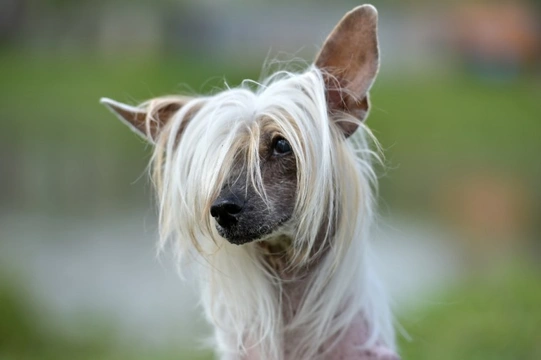
What is a primitive mouth in the Chinese crested dog?
The Chinese crested dog breed is a very unusual looking one that is quite eye-catching, coming in two variants of which one has no fur! Even the Chinese crested that does have fur has an unusual fur texture and appearance as a whole, making the breed unique in appearance even at a glance.
However, this is not the only unique appearance trait the breed may possess either, and the Chinese crested is a breed that can have a certain dental formation that is referred to as a “primitive mouth.”
Read on to find out what a primitive mouth is, and what this means for the Chinese crested dog itself.
What is a primitive mouth?
A primitive mouth is the name given to a certain style of dentition that some dogs, like the Chinese crested, can display. These teeth are quite different to that of the average pet dog, and across most other dog breeds from all over the world, their teeth are fairly uniform.
The average dog’s teeth are comprised of the usual arrangement of canines, incisors and so on in a certain common layout, and while some dogs may have dental problems, or the odd additional or absent tooth from the usual layout, canine dentition among pet dogs is fairly uniform.
This applies less so to brachycephalic breeds, who often suffer from dental overcrowding and associated problems; but even so, their teeth would be the same as other dog breeds if it were not for the selective breeding that causes their teeth to be overcrowded.
Chinese crested dogs on the other hand, may have very different teeth, which are all very sharp and pointed and basically look like a mouth full of small canine teeth rather than the usual paired canines with flatter-surfaced teeth alongside.
The primitive mouth means all of the dog’s teeth share this appearance, and also that the roots of their teeth are not as long and secure as that for other dogs, which can result in them suffering from tooth decay, tooth loss, and various other dental problems from quite a young age.
The teeth of a Chinese crested dog with a primitive mouth may be referred to in breed circles as tusks rather than teeth.
Do all Chinese crested dogs have a primitive mouth?
The Chinese crested dog breed comes in two distinct variants, which are the hairless version and the “powderpuff” version respectively.
While powderpuff and hairless dogs of the breed are born within the same litter and so what combination will occur in any litter is something of a lottery, there are actual genetic differences between the hairless and the powderpuff variants; and dogs that inherit the hairless coat gene also inherit the traits for a primitive mouth too.
This means that all or virtually all truly hairless Chinese crested dogs will have a primitive mouth, while powderpuff Chinese crested dogs are far less likely to have a primitive mouth.
Bear in mind that the amount of hair on a powderpuff Chinese crested can be very variable, and that the owners of some such dogs may clip their fur to give them the appearance of being hairless, so don’t be confused or surprised if you find that dogs of the breed that you see with or without hair respectively don’t match what we’ve mentioned in terms of their teeth!
What does a primitive mouth look like?
A primitive mouth in the dog is quite distinctive and easy to spot if you know what you’re looking for. Even if you did not know in advance what a primitive mouth is or that the Chinese crested may have it, once you saw their teeth you would immediately recognise that it looks quite different from what you see in the average dog of other breeds.
Chinese crested dogs have petite mouths and faces and even so, the teeth within a primitive mouth are small in proportion.
They will all be short, sharply pointed, and not necessarily flat and in line; each tooth coming to a point means you’ll see gaps between them, and they may not appear uniform, with some appearing crowded and others widely spaced.
In older Chinese crested dogs with a primitive mouth, clear gaps from lost and missing teeth are common too.
Does having a primitive mouth cause any problems for the Chinese Crested dog?
The teeth of a primitive mouth don’t have as deep roots as regular teeth, and so aren’t as resilient, making them more likely to be lost or damaged than regular teeth, and at an earlier age.
It also makes them more prone to damage and knocks, and dental decay; as well as potentially growing in at odd angles. Altogether, a primitive mouth is more likely to require veterinary dental care than regular teeth, and special care must be taken by the owners of dogs with primitive mouths to keep the teeth clean, prevent chips and damage by hard food and toys, and to check them regularly to ensure they’re in good condition.



